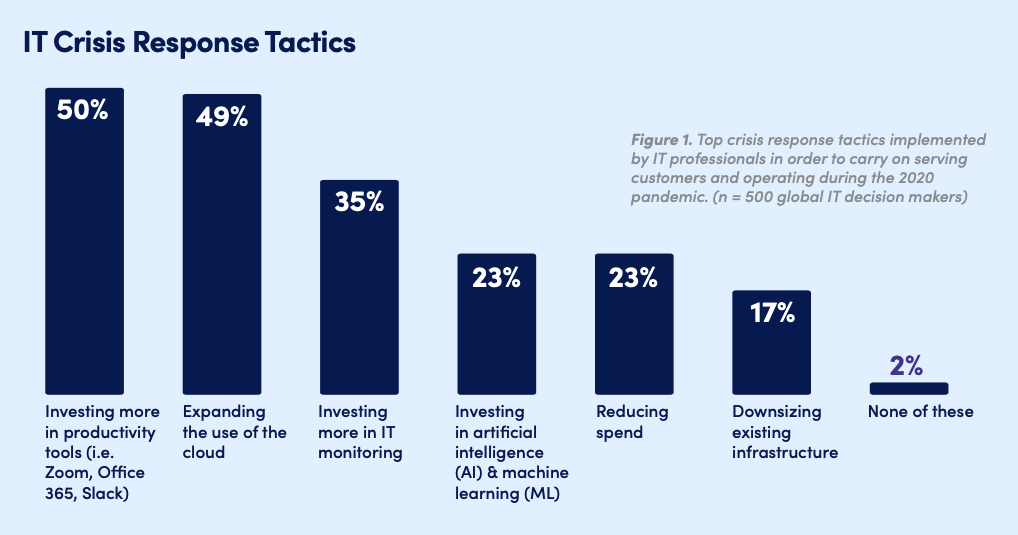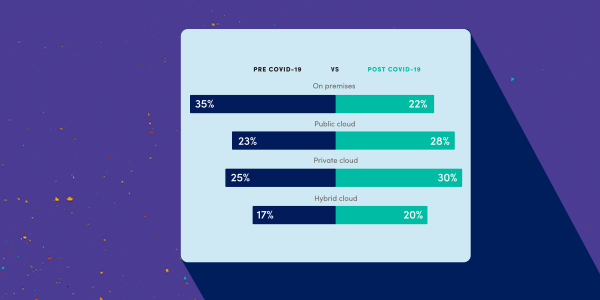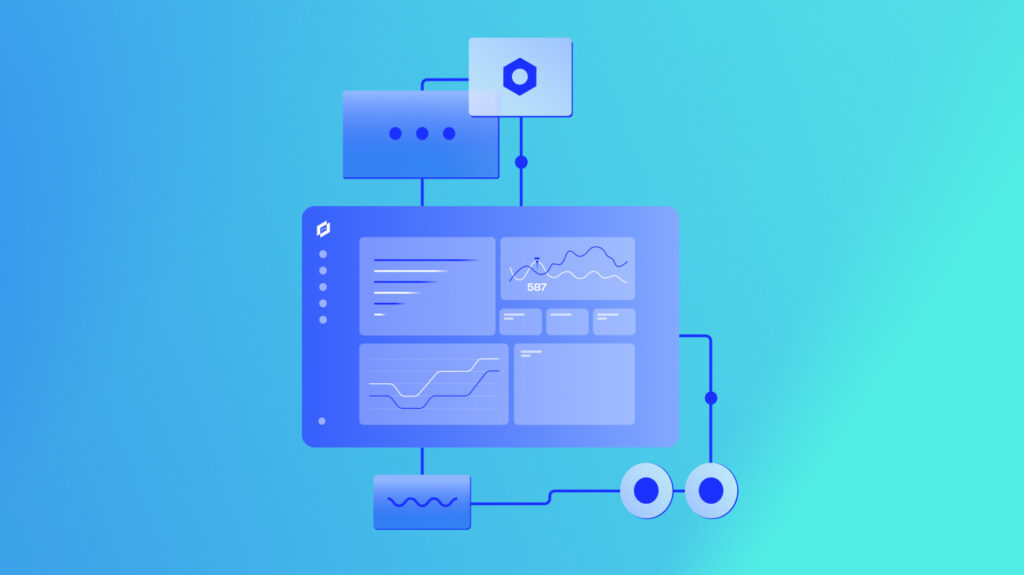Maintaining business continuity is both more difficult and more important than ever in the era of COVID-19. Typically, IT departments evolve their approaches and technologies over time to meet the needs of customers. But that approach may soon be outdated thanks to the global pandemic.
To dig deeper into how IT departments are able to quickly adapt and evolve in times of crisis, LogicMonitor commissioned a research study of 500 IT decision-makers from across North America, the United Kingdom, Australia, and New Zealand.
According to LogicMonitor CEO and President Kevin McGibben, “Maintaining business continuity is both more difficult and more important than ever in the era of COVID-19. IT teams are being asked to do whatever it takes — from accelerating digital transformation plans to expanding cloud services — to keep people connected and businesses running as many offices and storefronts pause in-person operations. The time is now for modern enterprises to build automation into their IT systems and shift workloads to the cloud to safeguard IT resiliency.”
LogicMonitor’s new research data reveals that CIOs, CTOs, and their teams are leaning into AIOps, automation, cloud, and intelligent infrastructure monitoring to weather the storm and ensure business continuity for their customers.
1. IT Teams Lack Confidence in Their Infrastructure’s Resilience
Having a business continuity plan is necessary to ensure that companies can perform their normal business functions even in the midst of a crisis. Our study found that 86% of companies had a business continuity plan in place before COVID-19, but only 35% of respondents felt very confident in their plan. Many companies and their IT personnel were not prepared to transition to and support a fully remote business model and workforce.
IT decision-makers also expressed overall reservations about their IT infrastructure’s resilience in the face of a crisis. Globally, only 36% of IT decision-makers feel that their infrastructure is very prepared to withstand a crisis. During a crisis when people must work remotely or where the office cannot be accessed in a reasonable timeframe, IT leaders are most concerned about the following:
- Dealing with internet outages or other technical issues remotely
- Network strain from having too many individuals logging in remotely
- VPN issues
- Not being able to access hardware
- Teleconference software security issues
However, most IT decision-makers have a plan to address these fears. Leaders around the world are investing in productivity tools and expanding the use of cloud-based solutions and platforms to maintain business continuity and serve customers during the global pandemic.

2. COVID-19 Is Dramatically Accelerating Cloud Adoption
As a result of newly distributed and remote workforces, many organizations are also initiating or accelerating shifts to the cloud. LogicMonitor has helped modern enterprises shift from on-premises to the cloud for years, but due to remote work orders departments are further accelerating their migration to the cloud.
Before COVID-19, IT professionals said 65% of their workload was in the cloud. However, just six months later, IT professionals expect that 78% of workloads will reside in the cloud by 2025 due in part to the global pandemic.
3. IT Leaders Are Embracing Automation
Automation is a top priority for many businesses as part of their larger digital transformation initiatives. In the first half of 2020, the benefits of IT automation have become increasingly clear. 50% of IT leaders who have a “great deal of automation” within their IT department also say they’re very confident in their ability to maintain continuous uptime and availability during a crisis.
Many IT leaders view the automation of certain IT tasks or alerts as a business enabler that allows them to operate more efficiently and focus on innovation, rather than keeping the lights on. In our study, 74% of IT leaders state that they employ intelligent systems like artificial intelligence and machine learning to provide insight into the performance of their IT infrastructure. And 93% of IT leaders say automation is worthwhile because it allows IT leaders and their teams to focus on more strategic tasks and initiatives.
Some IT decision-makers do have concerns about automation and machine learning. The potential for a high upfront time investment in order to get everything working properly tops that list of concerns, according to the survey results. Automation is also perceived by some as a threat to job retention. However, others view automation as a positive thing when faced with the spectre of pandemic-related layoffs or budget cuts. 72% of IT leaders believe that the automation of IT tasks would enable their department to operate effectively in the case of staff reduction.
The time is now for modern enterprises to build automation into their IT systems and shift workloads to the cloud to safeguard IT resiliency. For three recommendations on how to adapt to best handle the new era of remote work, download the full Evolution of IT report today.
Subscribe to our blog
Get articles like this delivered straight to your inbox








